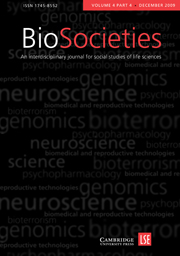Article contents
Pathways to Plausibility: When Herbs Become Pills
Published online by Cambridge University Press: 01 March 2008
Abstract
Herbal medicine has long been contrasted to modern medicine in terms of a holistic approach to healing, vitalistic theories of health and illness, and an emphasis on the body’s innate self-healing capacities. At the same time, since the early twentieth century, the cultivation, preparation and mass production of herbal medicines have become increasingly industrialized, scientificized and commercialized. What is more, phytochemical efforts to identify and isolate particular ‘active ingredients’ from whole-plant extracts have intensified, often in response to increasing regulatory scrutiny of the safety and quality of herbal medicinal products. In this article, I examine whether describing these developments in terms of a biomedical ‘colonization’ of herbal medicine, as has been common, allows us to sufficiently account for the mundane collaborative efforts of herbalists, botanists, phytochemists, pharmacologists, toxicologists and clinicians to standardize and develop certain herbal remedies. By focusing on recent efforts to industrialize and scientifically develop a ‘Western’ (St John’s Wort) and a Vietnamese (Heantos) herbal remedy, I suggest that herbal medicine has come to be not so much colonized as normalized, with herbalists, phytochemists and pharmacologists working to develop standardized production procedures, as well as to identify ‘plausible’ explanations for the efficacy of these remedies.
- Type
- Articles
- Information
- Copyright
- Copyright © London School of Economics and Political Science 2008
References
- 23
- Cited by


